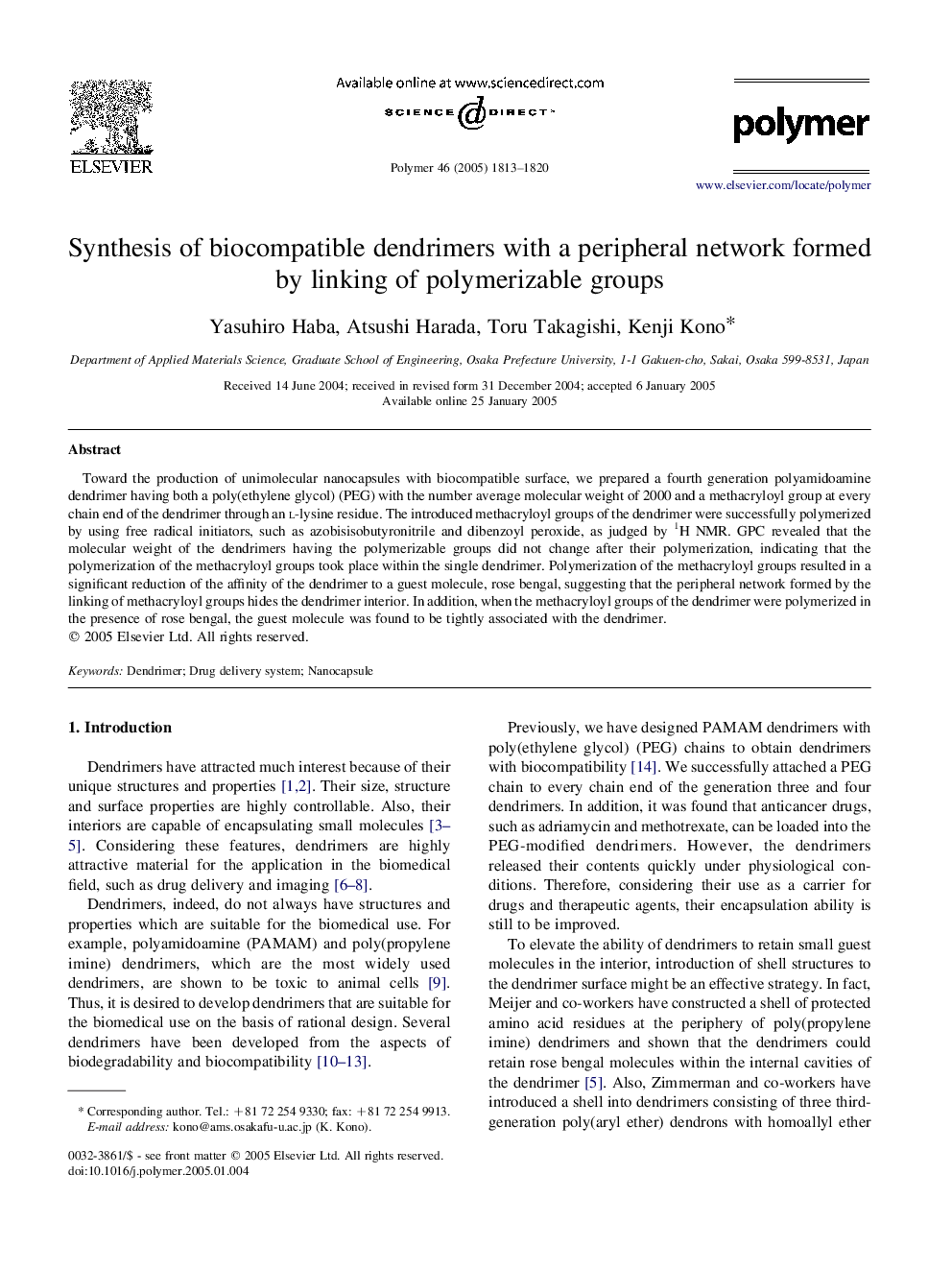| Article ID | Journal | Published Year | Pages | File Type |
|---|---|---|---|---|
| 5192032 | Polymer | 2005 | 8 Pages |
Toward the production of unimolecular nanocapsules with biocompatible surface, we prepared a fourth generation polyamidoamine dendrimer having both a poly(ethylene glycol) (PEG) with the number average molecular weight of 2000 and a methacryloyl group at every chain end of the dendrimer through an l-lysine residue. The introduced methacryloyl groups of the dendrimer were successfully polymerized by using free radical initiators, such as azobisisobutyronitrile and dibenzoyl peroxide, as judged by 1H NMR. GPC revealed that the molecular weight of the dendrimers having the polymerizable groups did not change after their polymerization, indicating that the polymerization of the methacryloyl groups took place within the single dendrimer. Polymerization of the methacryloyl groups resulted in a significant reduction of the affinity of the dendrimer to a guest molecule, rose bengal, suggesting that the peripheral network formed by the linking of methacryloyl groups hides the dendrimer interior. In addition, when the methacryloyl groups of the dendrimer were polymerized in the presence of rose bengal, the guest molecule was found to be tightly associated with the dendrimer.
